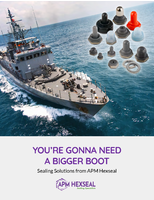Tool Lifecycle Management: TDM Base Module Forms the Foundation for Future Digital Tool Data Management

Tool Lifecycle Management concerns the entirety of the production process from the definition of tools through their use in planning up to the seamless transfer and use on the shopfloor.
The advantages of Tool Lifecycle Management are obvious: Throughout all departments, every employee should have access to the tool data. In order for this process to work smoothly, it needs a center in which all information converges…the TDM Base Module and an efficient data base. Together they form the basis for tool management and enable economical and transparent data organization in all company divisions.
Every department has a different demand for tool data. For NC programming it is the data of tool assemblies. In the crib it is the order information that includes tool items. In turn, tool assembly requires tool lists, tool assembly information and workpiece setting sheets. The TDM Base Module depicts this basic structure of machining production on three functional levels. For every area represented on the software side, extensive data and documents about the tool can be filed. This also includes feeds speeds, which define conditions of use specific to materials and cutting grades and record collision parameters and presetting data for tool assemblies.
Linking tool items, tool assemblies and tool lists is also of central importance: The user can always see which items are built where and where they are on the tool lists. The TDM Base Module also provides important information for the tool crib, including the location of tool items at workspaces, the management of parts in need of repair as well as the minimum stock level.
The TDM Base Module meets all the requirements of modern, digital production; tool selection via graphic class or the features of technology and machining procedures; automatic tool assembly with plausibility check; the integrated CAD kernel for displaying 2D and 3D graphics; the automatically generated parts, tool and production lists; the automatically generated discrepancy lists or the tool catalogs of more than 50 tool manufacturers that can be integrated: All providing a solid basis for the Tool Lifecycle Management of the future.




